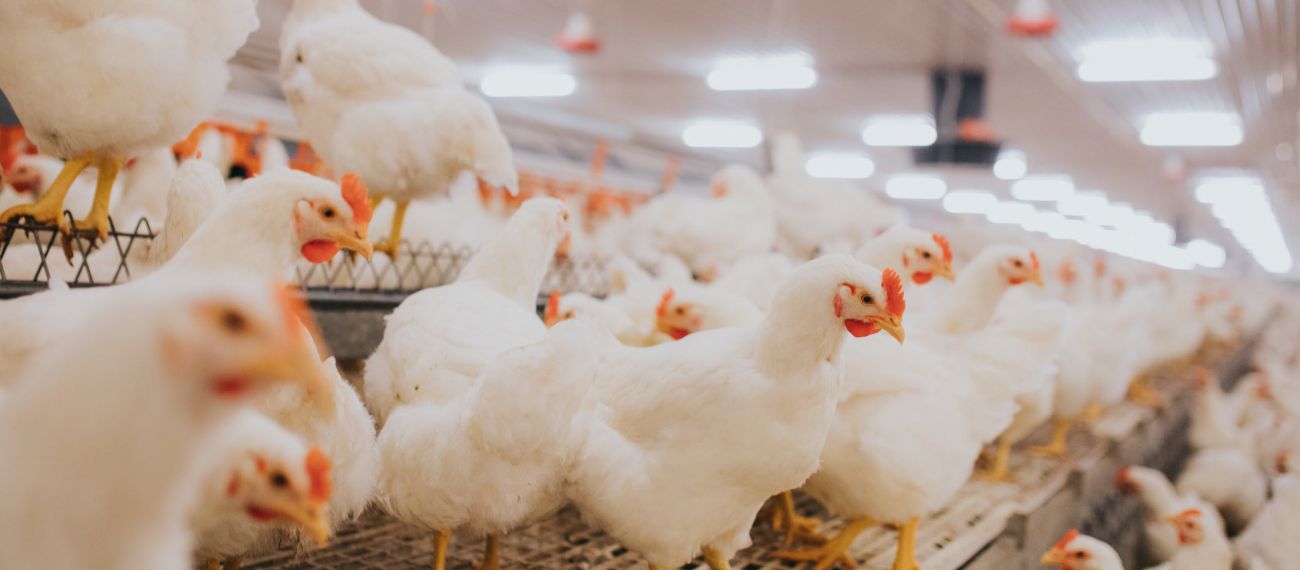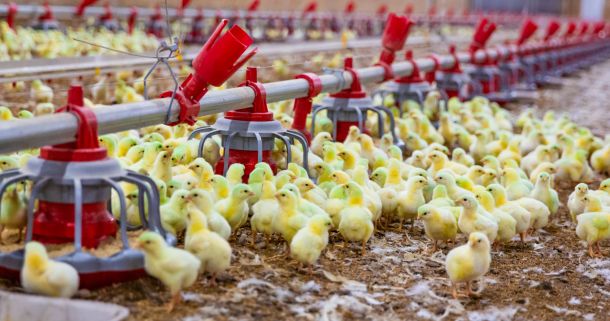Ten Tips for Starting Your Commercial Poultry Farm

First Financial Bank
Are you thinking about building a commercial poultry farm and turning it into a thriving business? There are several important things to consider before entering the poultry industry.
Commercial poultry farming is a booming business with plenty of rewards. According to a recent poultry industry report, the global poultry industry is growing fast and expected to grow to over $422 billion in 2025. With all this growth, many farmers are looking to build a poultry farm.
Though there are many things to learn about starting a poultry farm, the 10 tips below can provide you a great place to start.
1. Do Your Research
Find another farmer who has had experience in poultry farming and ask them for their insights and mentorship. Ask questions about the challenges and improvements that are necessary to create and run a successful commercial poultry farm. Use your conversations to learn about the type of poultry farm and birds they work with and the integration partner with whom they are contracted. You want to know both the positives and negatives of the work. Though it is an industry with a lot of opportunity, it is not for everyone.
2. Get Firsthand Experience
Before entering the commercial poultry industry, it’s important to get experience. This is a large investment of your time and resources to build or buy a poultry farm. This will also help you demonstrate your commitment to any potential business partners, integrators and lenders, like First Financial Bank. You’ll want to work for someone else and manage the work successfully before venturing out on your own. When you’re ready to meet with your poultry integration partner, you’ll better understand the business, including terminology such as “out-time” and what that may mean to your earning potential.
3. Shop Around for an Integration Partner
Each poultry company is different and has its own requirements from you as the farmer. Talk to each integration partner to decide what works best for you, and your future business.
Part of choosing an integration partner is choosing the type of poultry you want to farm. Choices include broiler chickens (for meat), breeders (for eggs), or other types of specialty birds like turkey or goose. Contact potential integration partners to learn more about your options and the benefits and challenges to raising each type of bird. You’ll learn about an integration partner’s specific requirements for each type of bird.
The poultry companies supply you with the birds, poultry feed, transportation, poultry processing, and marketing. They’ll also handle your flock’s veterinary care and assist you with breeding a healthy and productive flock.
On your end, you’ll be responsible for the growing facilities and the flocks of birds. The number of flocks will depend on the type of flock and the size goals. Because each integration partner has its own expectations and requirements, it’s important to gather as much information as you can to make sure it’s a good fit.
4. Select Your Farm’s Location
While choosing the type of bird and integration partner, you’ll also be looking for a best fit location. Deciding on a good location for your poultry farm is one of the most important first steps to success in the poultry industry. Your integration partner will have specific requirements around where or how far you can be from their facilities, the specifications for the structure to house the flocks – and more. Contact your poultry integration partner with any questions you may have about whether the land you are considering is suitable for your new poultry farm’s construction. In addition to providing you with what is contractually obligated, they may also be able to give you guidance on typical construction costs or tips for evaluating a site.
5. Understand the Regulations
There are an array of laws and regulations that govern the production of food. You will need to educate yourself on the certification and licensing requirements for your particular operation at all levels of governing bodies: national, state and local. This can include providing a document and/or certification that demonstrates how you plan to comply with each requirement. For example, having an official waste management plan, also known as a Certified Nutrient Management Plan (CNMP) to share with the Natural Resources Conservation Service (NRCS). This will include information on your farm’s location, number of birds, and sizes of your poultry houses. For your loan file, the NRCS will need permission to share this information with your lender.

6. Find a Lender with Poultry Experience
Poultry farming can be expensive, especially when starting out. That’s why you need a good financial strategy before you get started. This is a great time to talk to an experienced Poultry Lender like First Financial Bank to learn more about your financing options, plus how to navigate the complexities.
To be ready for a discussion with a lender, create a thorough business plan that provides details of your finances and tangible business goals. Concerned about your credit score? Check it out yourself for free here. Besides a strong credit score, a solid business plan will show your lender and integrator that you’ll be able to pay off your loans, handle debt, and plan for the future of your farm.
7. Buy the Land You Need
Once you have an integration partner and secured funding from your lending partner, it’s time to purchase your land to start the buildout. Confirm the land is everything you need it to be today, and if it would support expansion for the future. This might include adding more poultry houses and/or row crops, depending on what is in your plans.
8. Hire the Right Contractor
Need to find a contractor? Talk to your trusted advisors, your integration partner and other poultry farmers nearby for recommendations on contractors who may be able to build your poultry houses. Do your due diligence and get references from their past clients. Also, collect as much information as you can about each contractor, and their services, from other sources such as the Better Business Bureau. Choose carefully; this is an important step and you have a lot at stake financially.
9. Lay the Groundwork for Raising Healthy Flocks
The United States Department of Agriculture (USDA) states that proper ventilation is the most important feature for keeping flocks healthy. Without it, impurities like dust and dander can cause diseases and weaken your flock’s immune system. As part of your build, you’ll be working with the construction contractor, the vendor for the ventilation system, and your integration partner, to choose and install the appropriate ventilation and other systems for your poultry houses.
Once you’re in operation, you’ll want to focus on maximizing yields while maintaining the health of your birds.
In addition, auditors from the government and your integration partner will look for clean farming conditions that minimize the spread of diseases that can harm your flock and hurt production. That’s why it’s important to establish secure biohazard protocols and pest controls ahead of time to minimize these costly risks. This includes sealing your chicken houses off to pests, using site-dedicated protective boots and protective equipment, and other sanitary protocols required by your integration partner. Our lenders have deep experience in poultry farming, so we adhere to strict protocols when we visit you at your farm.
10. Consider Buying an Existing Farm
Are you having trouble finding a piece of land to build a poultry farm from scratch? Do you have geographical or regulatory constraints that interfere with your plans? If so, you may want to buy an existing poultry farm for sale. You can consult with farmers in your area, look online, or ask your integration partner for their recommendations. Always check the farm’s age, its cash flow, and its location. Sometimes, buying a current poultry farm is more cost effective than building one from the ground up.
Conclusion
Like any successful business, it’s important to plan far ahead before starting a poultry farm. This starts with gaining experience, setting up a solid business plan, choosing an integration partner you want to work with, and finding the right financing partner for your business. At First Financial Bank, our Poultry Lenders have worked as poultry growers themselves. They can provide you with insights and guidance for how to best navigate the complex processes for financing a commercial poultry farm. Once you’re ready to build your farm, use your resources and knowledge to build your business and look for ways to grow your operations sustainably.
Our Poultry Lenders have experience like yours. Want to discuss your plans? Contact us for a free consultation.

When Refinancing Poultry Debt Makes Sense
Thinking of refinancing your poultry debt, but aren’t sure it’s a smart idea? There’s more to refinancing than just interest rate adjustments.

Solving the Puzzle of Poultry Farm Financing
Everyone always asks me what they need in order to borrow money. They also ask if they can make money and most of the time the answer is “It depends.”

Key Trends for Commercial Poultry Farmers to Watch
What are some of the key trends in poultry farming? Check it out.

